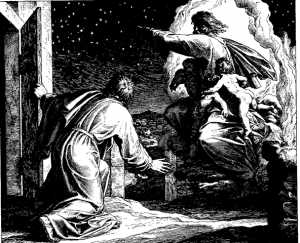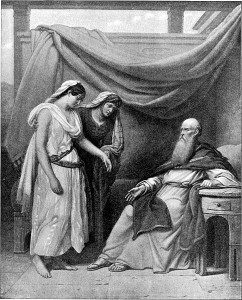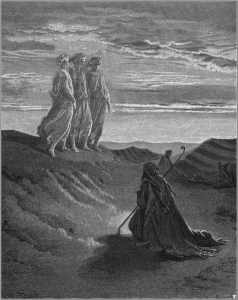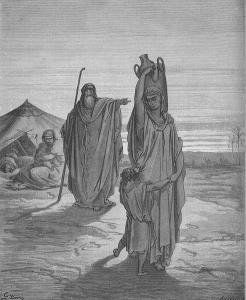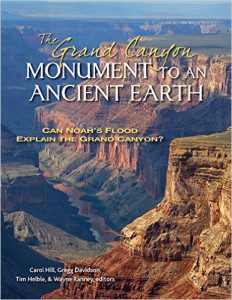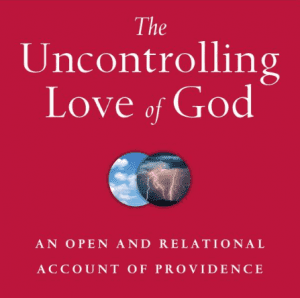Recently, there has been a lot of conversation on the relationship between complementarianism and abuse. The conversation was reignited when Ruth Tucker released her book, Black and White Bible, Black and Blue Wife.
Since then, many complementarians have critiqued Tucker’s argument that male headship theology allows for and sustains abuse. In response, more moderate complementarians and egalitarians have lent support to Tucker’s thesis with testimony and analysis of their own.
I want to be very clear. I believe that male headship theology makes abuse both more possible and more likely. I believe that power differences between functional equals are emotionally, physically, sexually, and spiritually destructive. However, I do not believe that all complementarian men are abusive, nor do I believe that all complementarians have turned a deaf ear toward the cries of the abused. But some have.
Critics have done a brilliant job of establishing all that complementarianism isn’t. I am grateful for their groundwork. But today, I want to explore what egalitarianism is. I want to move beyond a justified critique of complementarianism toward a strong egalitarian theology against abuse.
We must offer something redemptive, a theology that reflects Jesus’ eternal preoccupation with those the church has systematically overlooked.
I believe that egalitarianism can offer a better theology against abuse than complementarianism. So today, I’d like to explore three ways egalitarianism opposes abuse.
1. Egalitarian Theology Cannot Be Easily Used To Justify Abuse
Abusers long for justification. Their actions are carefully calculated attempts to own and control, not moments of failure. Abusers are strategic enough to spot the opportunity in complementarian theology—to abuse with divine justification, to own and control under the protection of male headship.
Egalitarian theology does not offer biblical protection, legitimate or not, to abusers. In fact, the very nature of egalitarianism, with its emphasis on mutuality and shared power, is contrary to an abuser’s desire to own and control. Egalitarianism is simply not a haven for abusers. A perpetrator will not find justification for his/her abuse in egalitarian ideas and biblical interpretation.
Egalitarian theology cannot be easily manipulated by a male abuser to achieve his goals of ownership and control. An abuser will find those tasks much more difficult under a theology that grants women equal authority. Egalitarian theology makes abusers unwelcome, because they cannot meet its standards for relational accountability and shared power.
In short, egalitarian theology is a critical weapon against abuse. It creates relational standards that are impossible for abusers to meet and gives authority to those they would victimize. It cannot be used as justification for an abuser and thus, is a powerful answer to the epidemic of domestic violence among Christians.
2. Egalitarian Theology Demands Male Accountability
Egalitarian emphasis on co-leadership and equal spiritual authority ensures that men are accountable to women.
Equals have the authority to hold each other accountable. This is what sets egalitarianism apart and makes it a strong theology against abuse. As coleaders, women themselves have the authority to hold men accountable, in the church and in the home.
Let’s revisit the ideal conditions for abuse. An abuser desires to own and control his victims. This mission is made more difficult when a would-be victim believes she is functionally equal to men, and if her theology tells her that men are directly accountable to her. An abuser does not want to be accountable to the church, to the law, or to the community. But perhaps even more so, he does not want to be accountable to women.
Now of course, I know that many complementarians believe that men should be accountable to women, and even stress holding abusers accountable. But if women are only ontologically equal to men, they have no practical authority to hold men accountable. Their ability to hold men accountable, like their equality with men, is purely theoretical.
But domestic violence is a non-theoretical reality for many women. Women need the practical authority that egalitarianism provides.
Egalitarianism demands male accountability to women and female victims. Not just to the church. Not just to male elders. Not just to the law. To women themselves.
Additionally, there are no subtle messages in egalitarianism that might cause a woman to think her abuse is her fault. Egalitarianism places the responsibility for abuse squarely and solely on the shoulders of abusers.
3. Egalitarian Theology is Victim-Centric
Egalitarian theology is deeply victim-centric. In an abusive situation, an egalitarian theology prioritizes the protection and care of the victim above all else. This is not to say that other theologies do not attempt to care for or protect victims. But I believe that egalitarianism is uniquely victim-centric for several reasons.
Egalitarianism attaches heavy weight to victims’ stories. It is excessively rare to hear of egalitarian churches or leaders shielding perpetrators from justice and silencing victims. In fact, egalitarian theology is opposed to victim-blaming and dismissing the experiences of women. Respect for the authority of female testimony is built into egalitarian theology, thus making an egalitarian church a safer environment for victims.
Further, egalitarian theology recognizes the systemic nature of abuse. Women disproportionately suffer from domestic and sexual violence on a global scale. Egalitarianism links these issues with patriarchy, and seeks to correct them through promoting mutual submission, co-leadership, and relational accountability. Because egalitarians are willing to name and contextualize the root of gender violence, they are more equipped to care for and protect its victims.
So what makes egalitarianism a strong theology against abuse?
Egalitarian theology is a hostile theology to abusers looking for biblical justification. Egalitarian theology gives women the authority to hold male abusers accountable. Egalitarian theology prioritizes the needs and protection of victims. Like any group or theology, abusers will still look for places to hide and perpetuate violence, but egalitarian theology makes that mission uniquely difficult.
Disclaimer: I have worked with abused women before and have female friends who have been abused. This does not make me an expert. I learn every day from those are who are far wiser and more informed then me. I humbly admit that my understanding of abuse and the needs of those who have been victimized is limited and incomplete. As such, I welcome constructive criticism and feedback.



